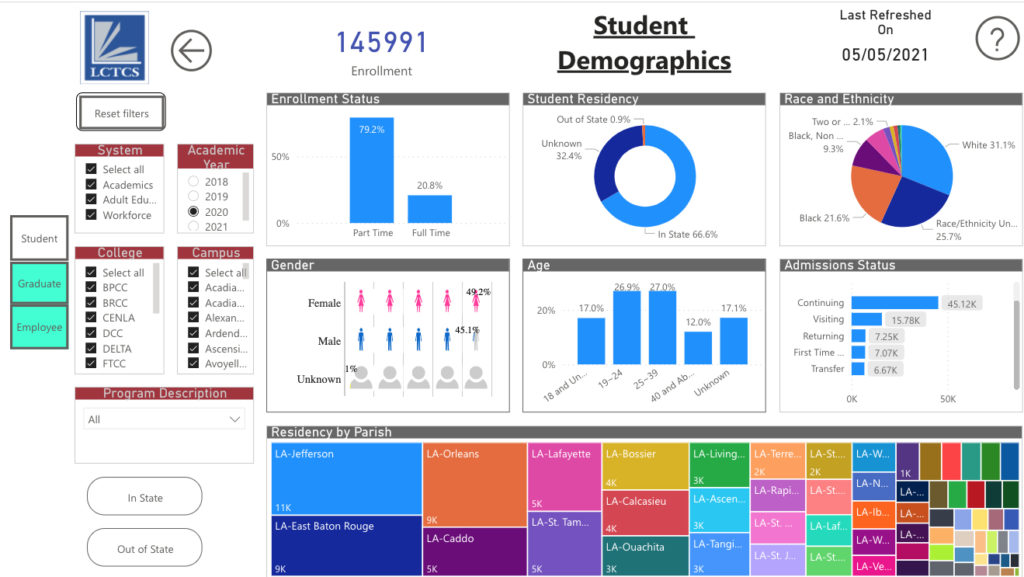About 45.7% of students in the registered nursing program at Bossier Parrish Community College in Louisiana are White and 38.8% are African-American, according to a diversity dashboard the state two-year college system recently developed.
But using a different filter unveiled a red flag: More than 70% of the program’s graduates were White, while 14.6% were African-American. The figures for program enrollment and its graduates should be nearly the same.
That’s an example provided during a session Wednesday at the AACC Digital conference to illustrate how the Louisiana Community and Technical College System (LCTCS) and its 12 two-year colleges are using data collected in a publicly accessible dashboard to improve equity and student success.
The dashboard is one component of the system’s efforts in this area. The overall drive to promote and improve diversity, equity and inclusivity began after the death of George Floyd, said Quintin Taylor, the system’s chief public affairs officer.
LCTCS went beyond just a statement condemning the incident and racism and included a “call to action” to create a diversity, equity and inclusion task force, a review of all majors and courses to ensure issues of race and equity are embedded in the curriculum, and enhancing services and training for underserved populations in areas of the state where it was needed.
To reach its goals, the system created a number of initiatives, such as analyzing student data, reviewing hiring and promotion practices, providing professional development, holding student panel discussions and creating the diversity dashboard. LCTCS even looked at how it selects vendors through an equity lens, Taylor said.
“There is a lot of work, and this is a marathon and not a sprint,” he said.
Back to the dashboard
The state system wanted the task force’s work to be transparent, said Amy Cable, LCTCS’s executive director of student services. The first thing it did was create a publicly accessible website with the latest information about the work of the panel and resources. It also links to the diversity dashboard.
LCTCS began working on the dashboard last summer. The robust dashboard can be viewed according to students, graduates and employees. It can look at individual colleges, programs, demographics (race, gender, age, part-time/full-time) and more. It can help college leaders in making decisions. For example, the system wants to examine if its faculty and staff mirror students at the colleges and programs. Taylor added that he also would like to study whether minority students are funneled into programs that lead to jobs that require fewer skills and pay less, such as certified nursing assistants.

“Those are uncomfortable conversations, but I’m happy that we’ve got the courage to begin to delve into them,” he said, adding that he hopes it will spark other colleges and systems to have similar discussions.
LCTCS continues to add new data to the dashboard, Cable said. It plans to add information from the U.S. Census so colleges can study how their communities look and if they are serving the population and demographics.
More AACC Digital on Thursday! The online conference continues at noon ET with an awards presentation, followed by sessions, exhibits and a conversation with America Ferrera. To cap the afternoon, there’s a social hour and prize giveaway! Register.
The system is hiring a reporting specialist to help with analysis to make recommendation and then to study whether those recommendations worked.
Task force recommendations
The task force has about 25 recommendations it has forwarded, with about six at the top:
- Implement a re-envisioned comprehensive student services model (help students with food and housing insecurities, transportation, childcare and more).
- Implement a strategic enrollment management plan that would take into consideration certain groups, such as minority males.
- Ensure issues of race and equity are embedded in the curriculum.
- Enhance services and training for underserved populations.
- Review and adopt a uniform human resources onboarding process.
- Implement safe spaces ally training and locations for LGBTQ+ students and employees.






